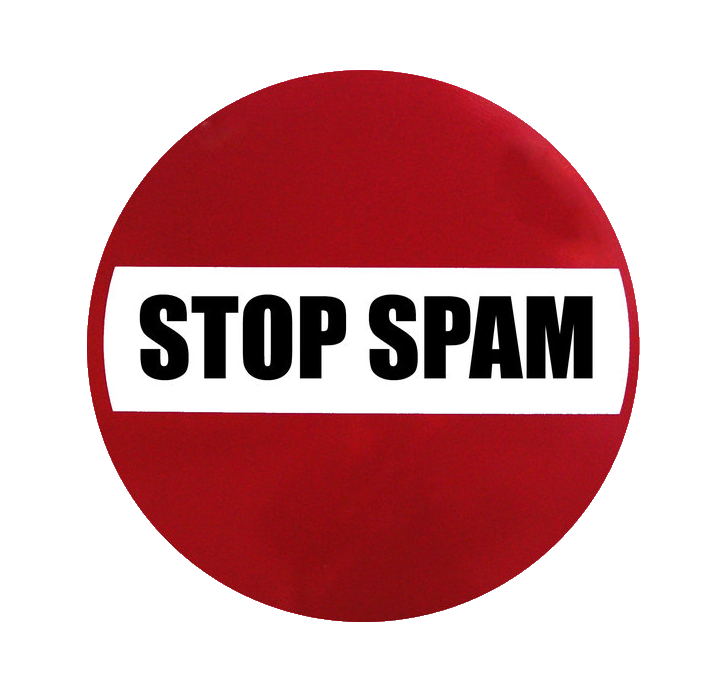
This image has format transparent PNG with resolution 720x686.
You can download this image in best resolution from this page and use it for design and web design.
Stop spam PNG with transparent background you can download for free, just click on download button.
Spamming is the use of messaging systems to send multiple unsolicited messages (spam) to large numbers of recipients for the purpose of commercial advertising, for the purpose of non-commercial proselytizing, for any prohibited purpose (especially the fraudulent purpose of phishing), or simply sending the same message over and over to the same user. While the most widely recognized form of spam is email spam, the term is applied to similar abuses in other media: instant messaging spam, Usenet newsgroup spam, Web search engine spam, spam in blogs, wiki spam, online classified ads spam, mobile phone messaging spam, Internet forum spam, junk fax transmissions, social spam, spam mobile apps, television advertising and file sharing spam. It is named after Spam, a luncheon meat, by way of a Monty Python sketch about a restaurant that has Spam in almost every dish in which vikings annoyingly sing "Spam" repeatedly.
Spamming remains economically viable because advertisers have no operating costs beyond the management of their mailing lists, servers, infrastructures, IP ranges, and domain names, and it is difficult to hold senders accountable for their mass mailings. The costs, such as lost productivity and fraud, are borne by the public and by Internet service providers, which have added extra capacity to cope with the volume. Spamming has been the subject of legislation in many jurisdictions.
A person who creates spam is called a spammer.
Email spam, also known as unsolicited bulk email (UBE), or junk mail, is the practice of sending unwanted email messages, frequently with commercial content, in large quantities. Spam in email started to become a problem when the Internet was opened for commercial use in the mid-1990s. It grew exponentially over the following years, and by 2007 it constituted about 80% to 85% of all e-mail, by a conservative estimate. Pressure to make email spam illegal has resulted in legislation in some jurisdictions, but less so in others. The efforts taken by governing bodies, security systems and email service providers seem to be helping to reduce the volume of email spam. According to "2014 Internet Security Threat Report, Volume 19" published by Symantec Corporation, spam volume dropped to 66% of all email traffic.
An industry of email address harvesting is dedicated to collecting email addresses and selling compiled databases. Some of these address-harvesting approaches rely on users not reading the fine print of agreements, resulting in their agreeing to send messages indiscriminately to their contacts. This is a common approach in social networking spam such as that generated by the social networking site Quechup.
Facebook and Twitter are not immune to messages containing spam links. Spammers hack into accounts and send false links under the guise of a user's trusted contacts such as friends and family. As for Twitter, spammers gain credibility by following verified accounts such as that of Lady Gaga; when that account owner follows the spammer back, it legitimizes the spammer. Twitter has studied what interest structures allow their users to receive interesting tweets and avoid spam, despite the site using the broadcast model, in which all tweets from a user are broadcast to all followers of the user. Spammers, out of malicious intent, post either unwanted (or irrelevant) information or spread misinformation on social media platforms.
In this page you can download free PNG images: Stop spam label PNG images free download